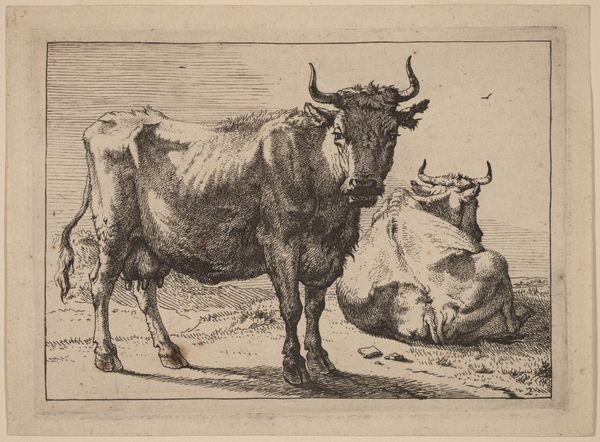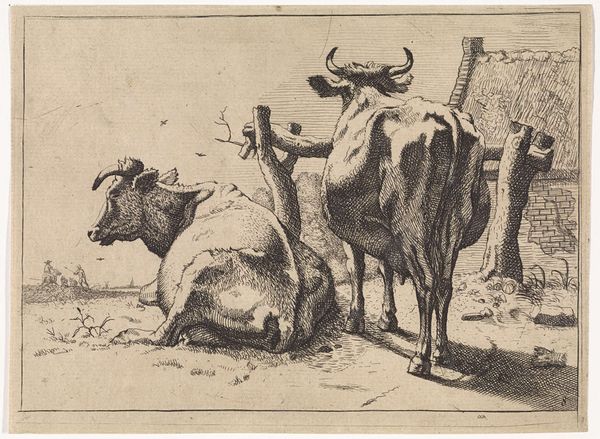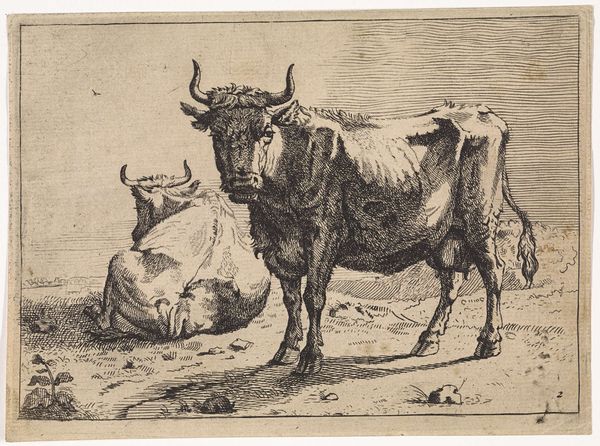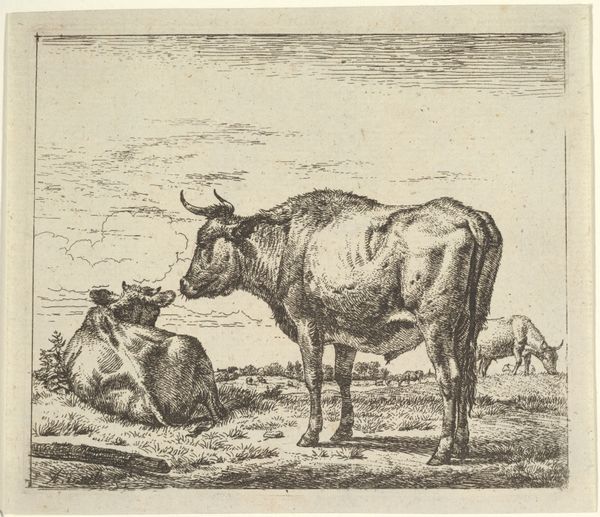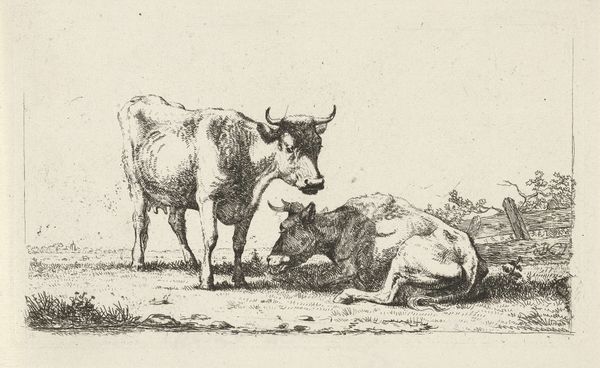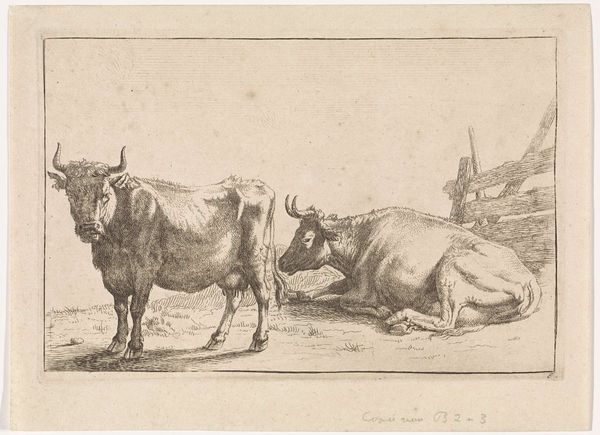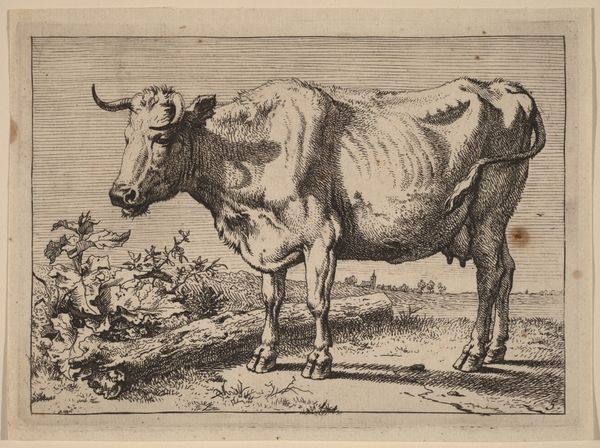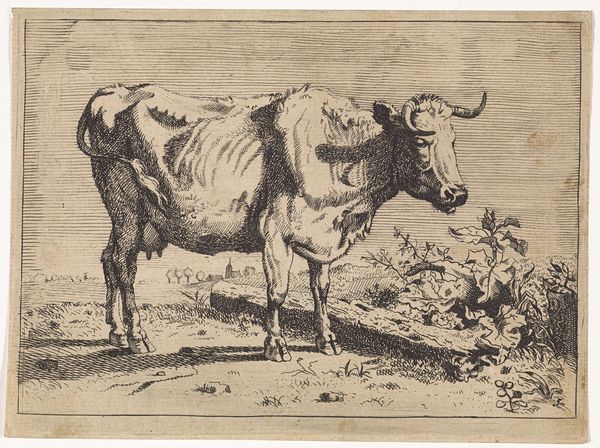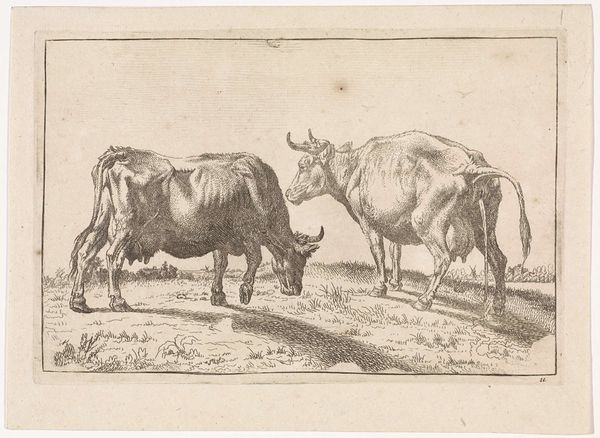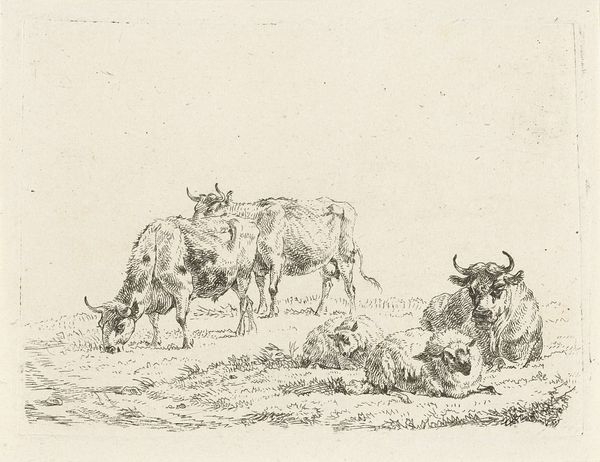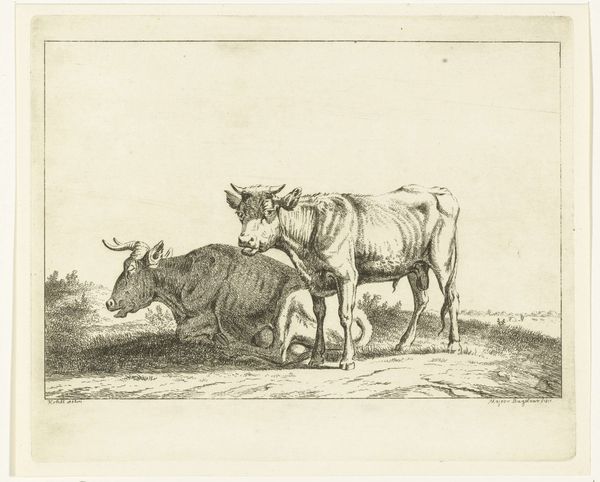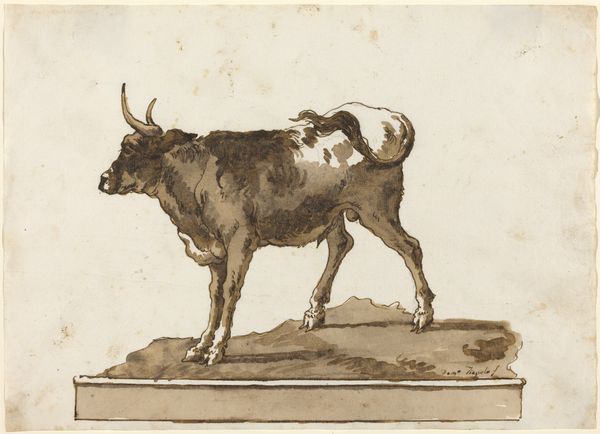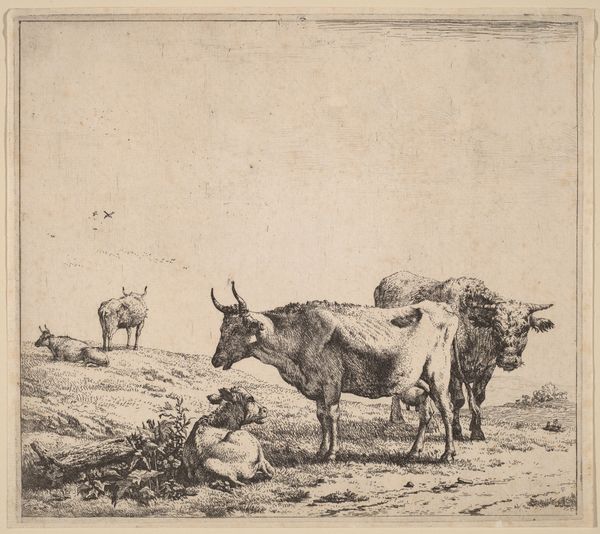
print, etching
#
animal
#
dutch-golden-age
# print
#
etching
#
landscape
#
genre-painting
#
realism
Copyright: National Gallery of Art: CC0 1.0
Paulus Potter made this etching, "Two Cows Seen from Behind," in the Netherlands during the Dutch Golden Age. It depicts, quite simply, two cows in a pasture, one standing and one lying down. But why cows? In the 17th century Netherlands, cattle weren't just livestock, they were symbols of national pride and prosperity. The Dutch had transformed their landscape through intensive agriculture, and their economic success was closely tied to the dairy industry. Potter's detailed and naturalistic depiction elevates these animals, reflecting a society deeply invested in its agricultural achievements. The very act of portraying cows with such care challenges traditional hierarchies in art, where mythological or historical scenes were favored. By studying period agricultural practices, economic records, and cultural symbols, we can understand how Potter's seemingly simple image is actually a complex reflection of Dutch society. Art history is not just about aesthetics, it is a window into the values and beliefs of a particular time and place.
Comments
No comments
Be the first to comment and join the conversation on the ultimate creative platform.
